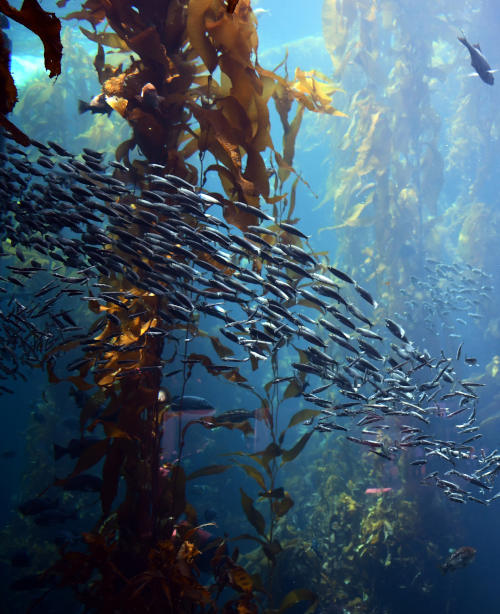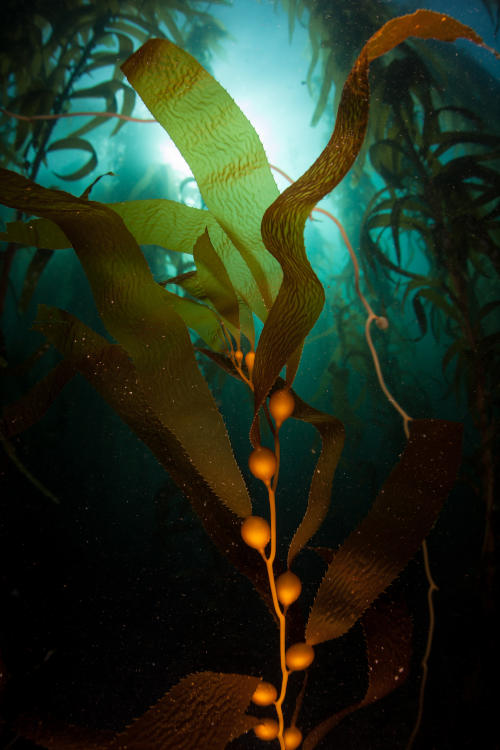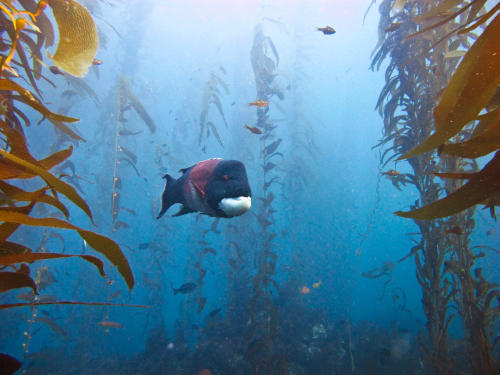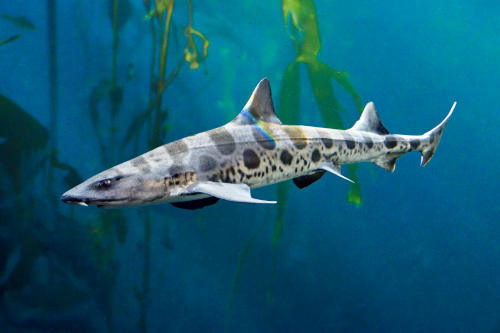Awesome Kelp Forest Diving
7 of the World's Best Destinations
Most prevalent on North America’s west coast, kelp forests create one-of-a-kind diving experiences. The forests grow close to the shore in cool conditions, providing food and shelter for a plethora of marine life. The dense forests are home to small, young fish that are hiding from predators and larger creatures such as seals, sea lions, sea otters, snowy egrets, blue herons, and even whales. The kelp can grow to a height of 130 feet, creating a unique, hazy ambiance for divers. But North America is not the only kelp forest dive destination...!


North America - California
The Golden State, while famous for its parks and landmarks, has an entire world to explore in its waters. Some of the most famous kelp forests are scattered throughout the Pacific shoreline, including destinations in San Diego, Catalina Island, Santa Barbara, and Santa Cruz.
One of San Diego’s most famous diving spots is the La Jolla Cove, which has a depth of 30 to 60 feet. The further north divers head, the rockier and thicker the terrain gets. Sea cucumbers, sea stars, tope sharks, and the seven-gill shark are often spotted. This site is an ecological reserve with healthy and diverse marine life. Snorkeling is also common at this site.
- Catalina Island, California
Known for its crystal-clear waters and vast marine life, Catalina Island’s underwater forest consists of giant bladder kelp. The kelp is rooted into the rocky ocean floor and is home to more than 150 types of fish like the California spiny lobster. This spot is ideal during the late summer to early fall when visibility ranges from 40 to 50 feet.
- Santa Barbara Channel Islands
The cold northern currents and warm southern currents mix in Santa Barbara’s waters, creating a diverse home to more than 1,000 species of marine life. The kelp forests are thick and dense, making it a struggle for boats passing through. For divers looking for an isolated diving experience, St. Nicholas is a great option. The island is the least popular amongst tourists, so the forests are left nearly untouched with sights of gorgonians, schooling fishes, tope sharks, and lobsters.
Just off the shore of the beach town Santa Cruz is the iconic Monterey Bay. Not only is the bay home to colorful nudibranchs and sea lions, but it is known for its cold-water diving due to the Submarine Canyon that plummets to a depth of more than 10,500 feet. The drop starts close to the shoreline and brings in nutrient-rich water. Divers arrive at their destination either by boat or kayak before discovering the vast kelp beds, anemones, whales, and more.
North America - Vancouver, Canada
Home to octopus, wolf eels, and anemones, Vancouver’s kelp forests should be on every diver’s bucket list. The forest is made up of bull kelp, which is a delicate golden-brown that drifts back and forth through the water. The plants grow up to 115 feet, and up to 10 inches a day as they mature. One of the most popular dive sites is the advanced Race Rocks, located along the southern end of Vancouver Island. This site often has extreme weather and has access to large marine life such as humpback whales and orcas.

Poor Knights Islands, New Zealand
Although kelp diving is most popular along the western coast of the U.S. and Canada, there are still some amazing sites south of the equator. The Poor Knights Islands in New Zealand have everything from gardens to volcanic walls to caves. The dense kelp forest thrives where the ocean floor begins to slope and is the perfect hiding place for the smallest of creatures. Poor Knights Island is known for the large groups of bull rays, long-tail rays, and short-tail rays. During the southern hemisphere’s summer, pods of orca whales pass through.

Cape Town, South Africa
Not only is Cape Town, the capital of South Africa, a great pick for exploring wrecks and spotting diverse marine life, it also has stunning kelp forests. Kelp dives typically start in the A-Frame before entering other sites like Castle Rock. This site is known for sightings of pyjama sharks, shy sharks, butterfish, cape knife jaws, and steenbras. Summer is the best time to dive in Cape Town, and the Atlantic side reaches visibility of up to 65 feet, but with a chilling water temperature of 50° F.

